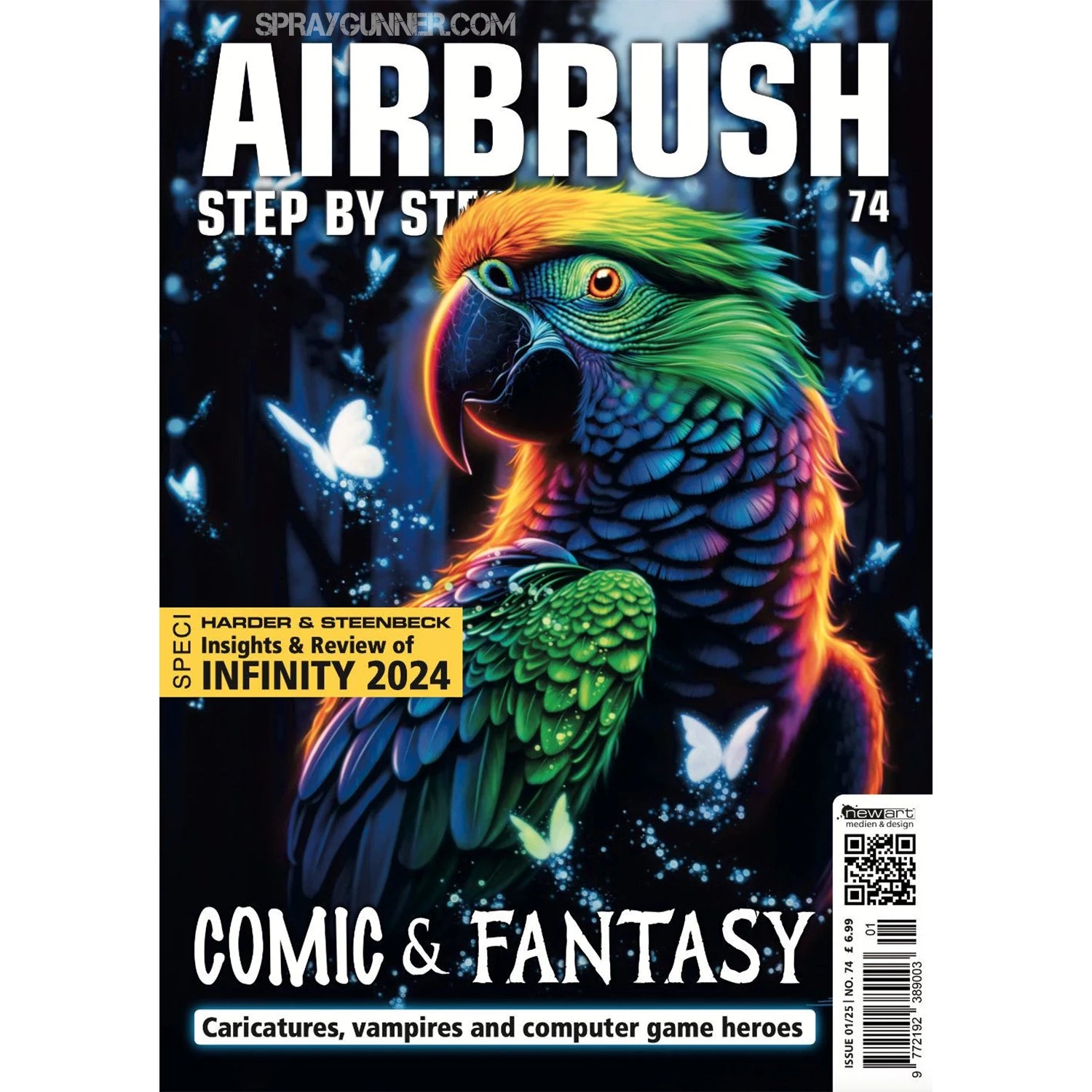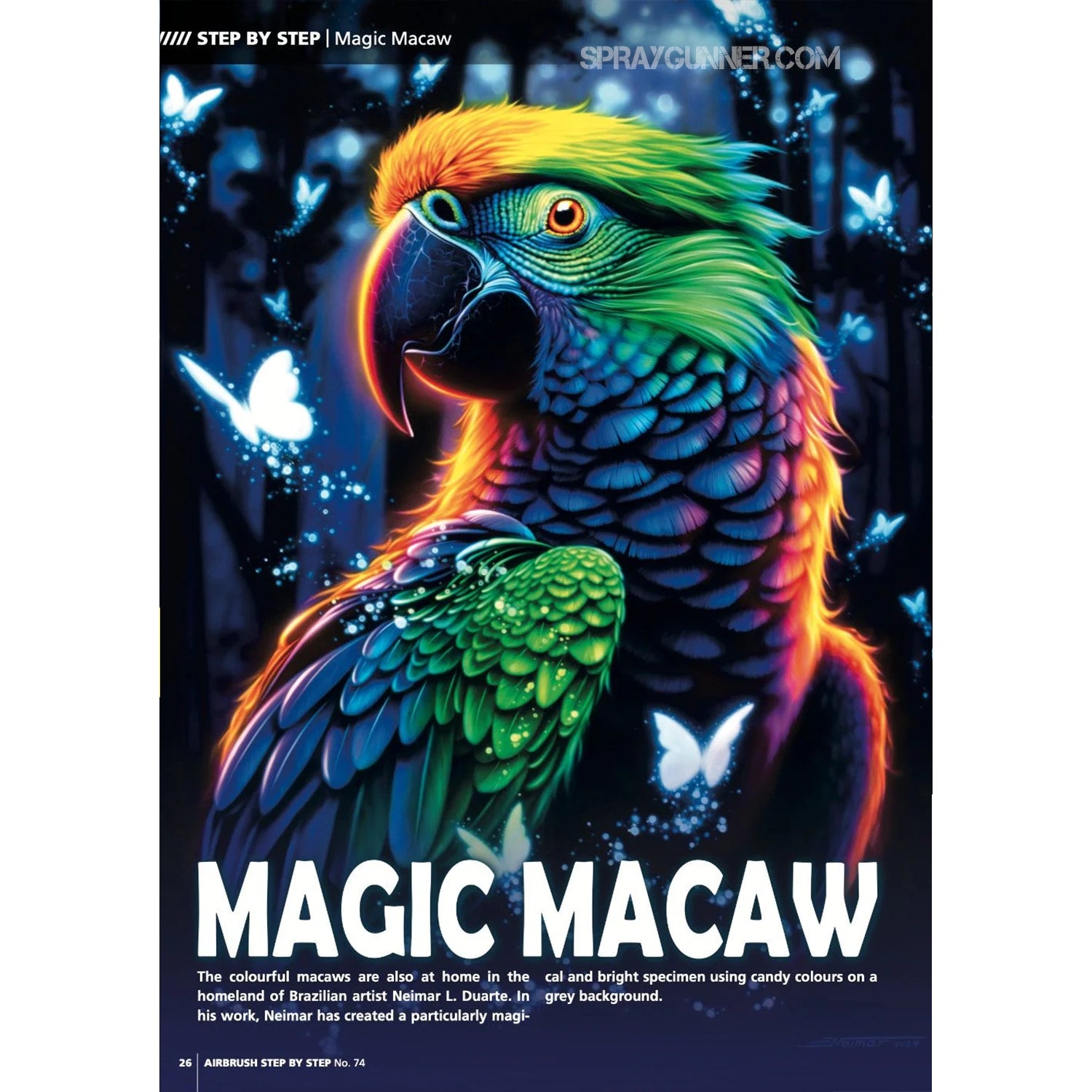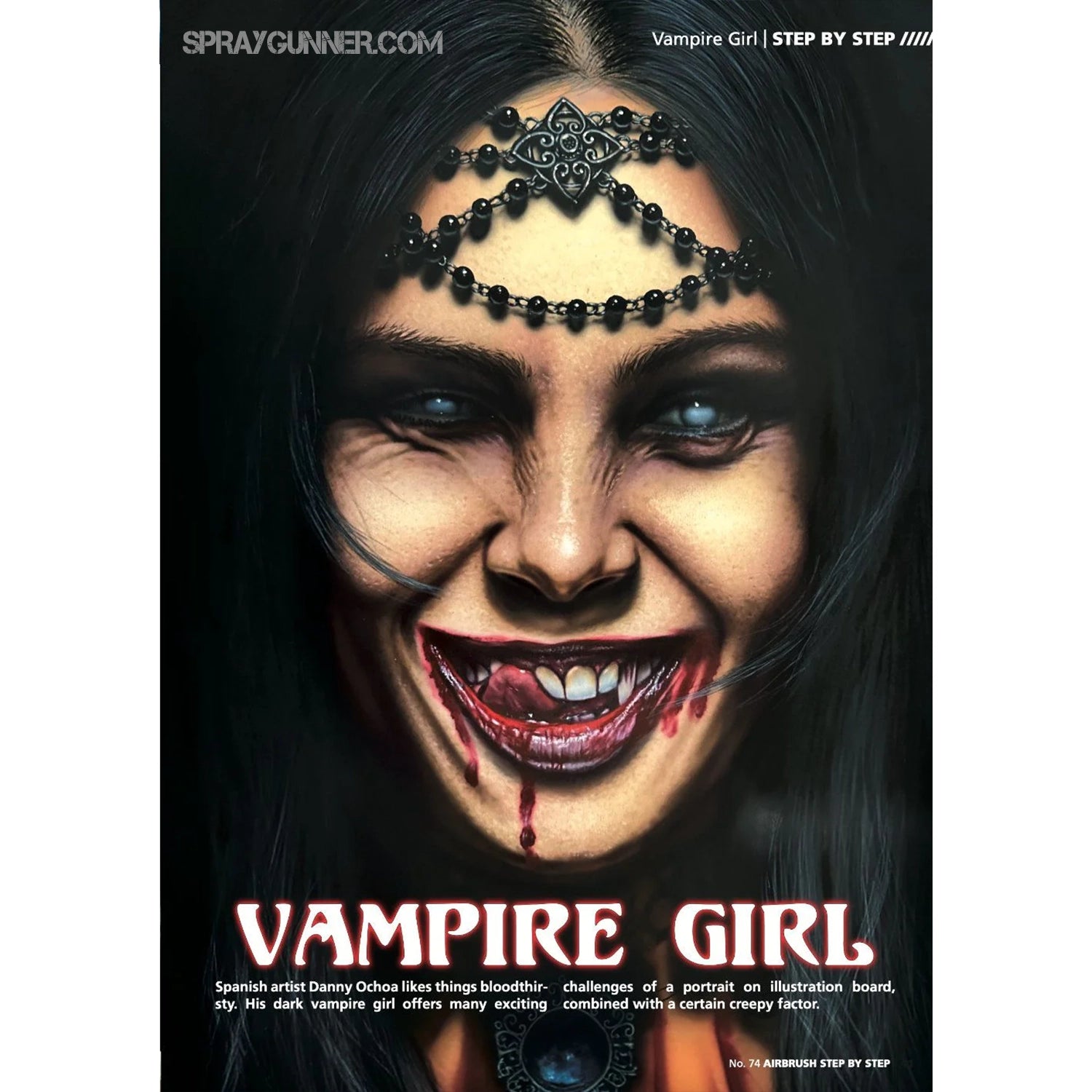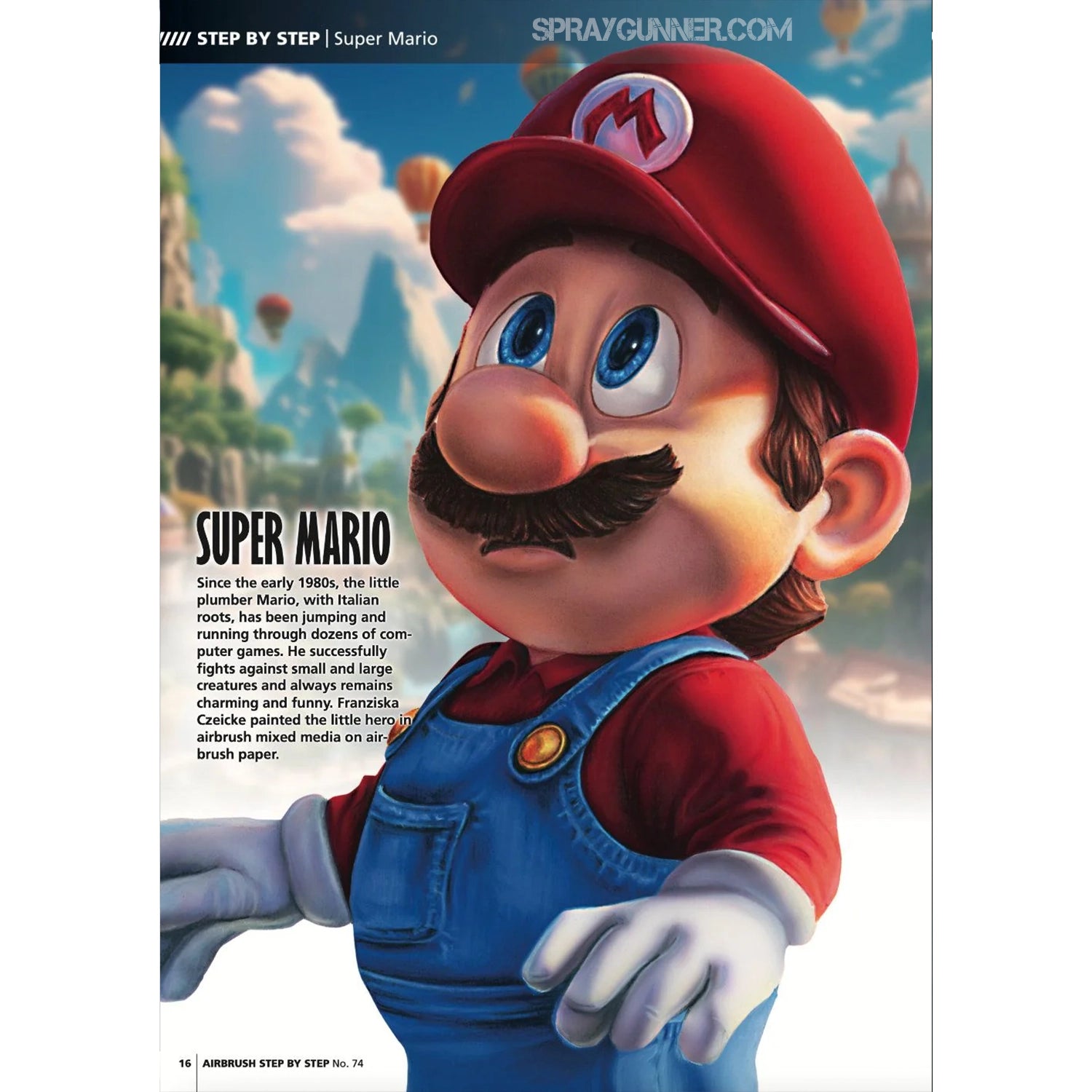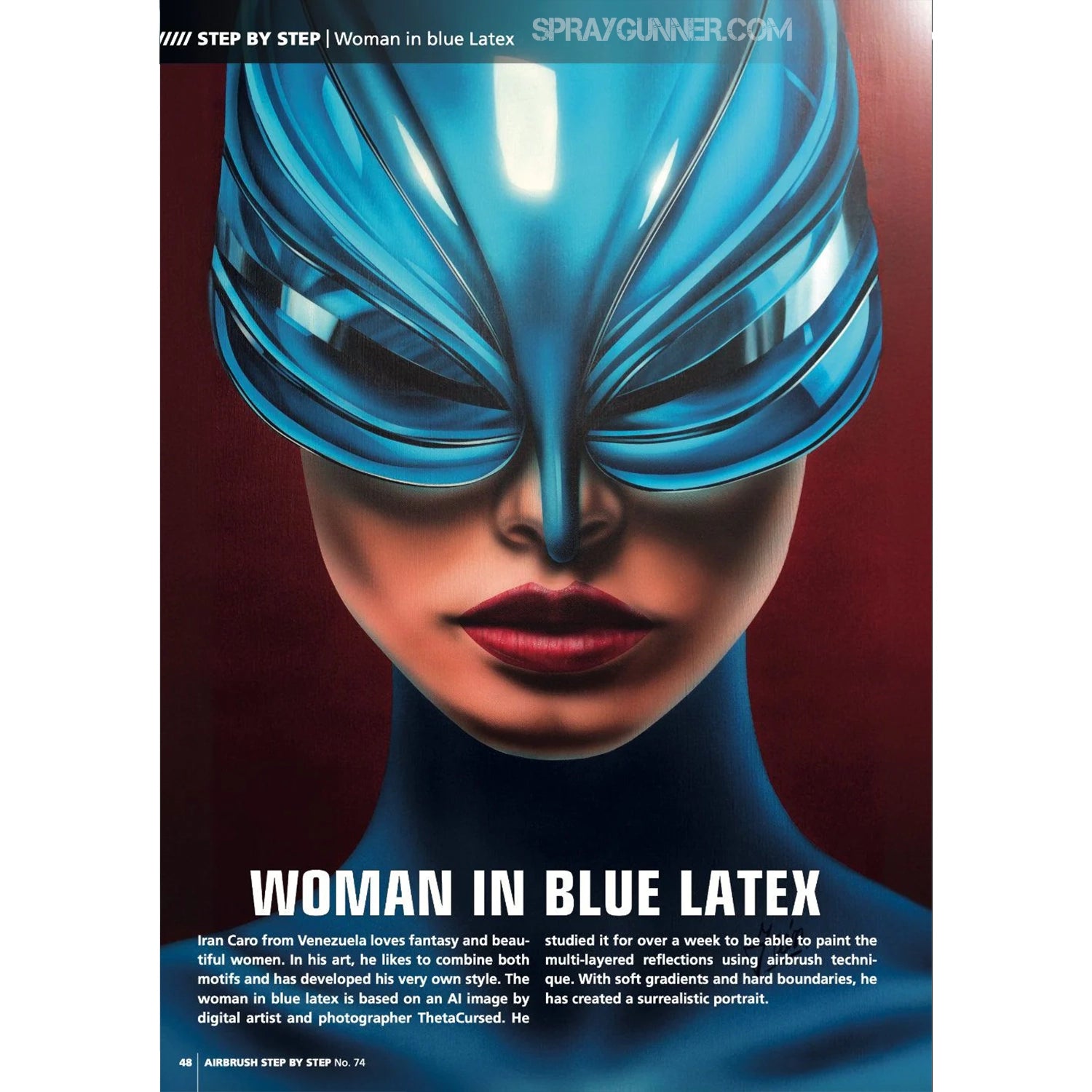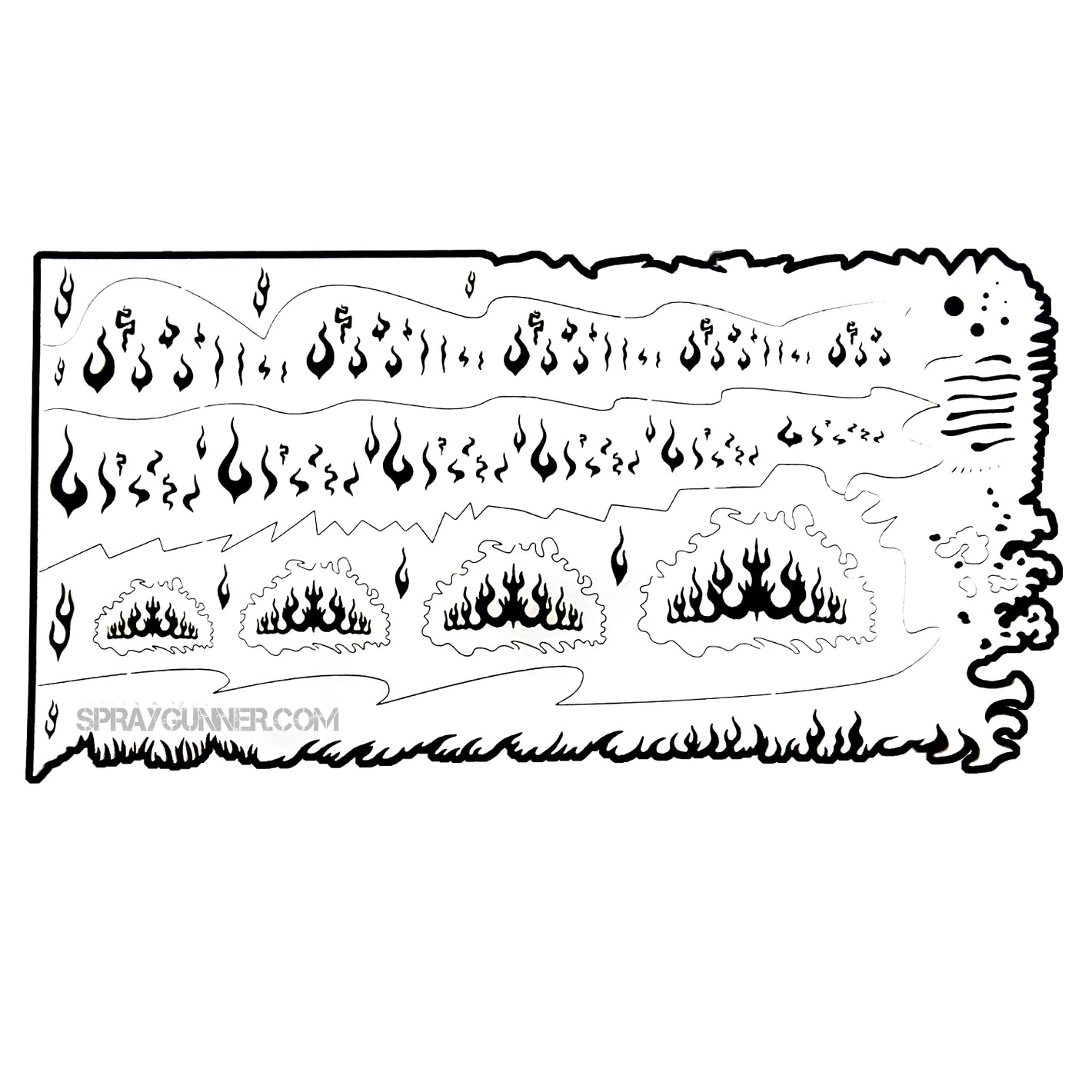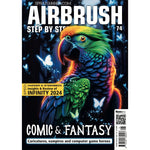
Regular price
$9.75 USD
Regular price
Sale price
$9.75 USD
AIRBRUSH STEP BY STEP | NO. 74
Comic and fantasy motifs are particularly popular as airbrush designs, because they often depict our favourite childhood heroes or current favourite series, which we like to have around us on our motorbike, helmet, room wall or simply as a framed picture. Unfortunately, however, these motifs are always subject to copyright, which customers often (un)knowingly ignore, causing headaches for artists. We always consider the motifs in this magazine, especially when they are painted on paper, canvas or smaller decorative objects, as practice pieces. What you paint for yourself and your own four walls is of no interest to copyright law. This only becomes relevant when it is painted as a paid commission and/or for a purpose that is visible to the outside world.*
In this issue, we have some good examples of how best to deal with these designs: Franziska Czeicke's Super Mario portrait is certainly a piece that could cause her problems as a commissioned work on a motorcycle or house wall. However, Franziska created it as a personal piece on airbrush paper and therefore simply uses the cute design as a successful mixed-media exercise. Spanish artist Danny Ochoa also uses many templates as part of the airbrushing courses he attends – including a portrait of a vampire girl. Here, too, it is not a problem if he finds templates on the internet. It is even better if you are open about the origin of the image – as with Iran Caro's ‘Woman in blue latex’. He uses it as an example in his own studio and states in his article that the template comes from the digital artist ThetaCursed. This reference and the associated honesty are particularly important in the context of work rights and are unfortunately often disregarded, especially on social media. In many cases, the ‘original artists’ have fewer problems with being ‘copied’ for private purposes (!) when they are referred to by name than when this is done secretly and tacitly.
In this issue, we have some good examples of how best to deal with these designs: Franziska Czeicke's Super Mario portrait is certainly a piece that could cause her problems as a commissioned work on a motorcycle or house wall. However, Franziska created it as a personal piece on airbrush paper and therefore simply uses the cute design as a successful mixed-media exercise. Spanish artist Danny Ochoa also uses many templates as part of the airbrushing courses he attends – including a portrait of a vampire girl. Here, too, it is not a problem if he finds templates on the internet. It is even better if you are open about the origin of the image – as with Iran Caro's ‘Woman in blue latex’. He uses it as an example in his own studio and states in his article that the template comes from the digital artist ThetaCursed. This reference and the associated honesty are particularly important in the context of work rights and are unfortunately often disregarded, especially on social media. In many cases, the ‘original artists’ have fewer problems with being ‘copied’ for private purposes (!) when they are referred to by name than when this is done secretly and tacitly.
- Choosing a selection results in a full page refresh.


